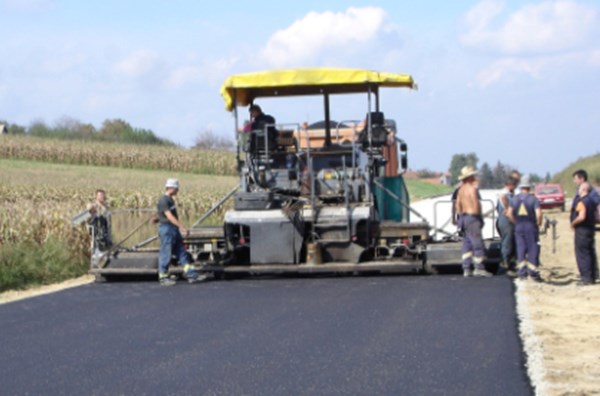Build and manage better road networks
Period 2001-2005
This period corresponds to the development of version 2 of HDM-4.
In early 2001, the second phase of management has commenced with new management arrangements. An HDM-4 Project Group was formed under the chair of the Project Coordinator which provided strategic oversight of the project. It held its first meeting in Washington in January 2001.
Neil Robertson continued as part-time project coordinator and two Associate Coordinators were appointed: Pierre Joubert (France) and Andrés Caroca (Chile).
Funding of the development of version 2 was made possible by the investment made by PIARC from its own funds and by the sponsoring provided by the following countries and organizations: Australia, Canada-Quebec, France, Japan, Latvia, New Zealand, Norway, Portugal, Switzerland, Tanzania, UK (DFID) and the Asian Development Bank.
In 2001, contractual arrangements were signed between PIARC and the University of Birmingham for delivery of services for the period July 2001 – June 2002, by the ISOHDM Secretariat in view of the release of version 2.0 in June 2002. The corresponding brief states in particular:
“The copyright to all original deliverables, or their components, produced in the delivery of this contract, in any physical or electronic forms, will be vested in the World Road Association (PIARC) on behalf of the ISOHDM sponsors, for the common good.”
At the PIARC Rome Council Meeting in October 2001, the following two main resolutions were taken:
- "The business case has to be reviewed in early 2002, and
- Agreement on first developments for version 2, subject to the approval of the business case.”
During the PIARC Executive committee meeting in Vancouver in April 2002, a presentation of the revised business case prepared by the PIARC ISOHDM Project Secretariat and the ISOHDM Technical Secretariat at the University of Birmingham, was made, with two options:
- Plan A, meeting the essential needs, and matching with the approved budget, and
- Plan B, with further developments to cover needs and expectations as they come from the McCoubrey report, beyond the financial involvement decided in Rome.
Plan A was approved, and a new group of independent people was created, to oversee the finalisation of the project in liaison with the Secretary General. This Expert Review Group (ERG) comprising representatives from the World Bank, Asian Development Bank, DFID, and experts from Australia, Bangladesh, Chile, Croatia, France, Japan, and South Africa was established in July 2002, with the following tasks:
- Review the questionnaire for a planned opinion survey to HDM users,
- Conduct a quality review of the scope of specifications for product improvements, in the light of the survey results,
- Conduct a quality review of results of the software testing and evaluation by expert users,
- Investigate and advise PIARC on options for future organisational and financial arrangements for managing sustainable HDM technology.
The opinion survey prepared by the PIARC ISOHDM Project Secretariat was conducted during 2002. This survey demonstrated very high acceptance of the current technology by users in all regions of the world, and very high support for continuing improvements to HDM Technology in the future[2]
The Expert Review Group met on January 14th, 2003 in Washington where the current situation was presented by PIARC Secretary General, Jean-François Corté.
Following Henry Kerali’s new position in the World Bank, work at the ISOHDM Secretariat was conducted under Professor Martin Snaith supervision from the end of 2002.
In 2003, some adjustments were made to the definition of the content of version 2.0 mainly as the result of delays from various parties regarding the supply of the material necessary for the definition of specifications for the software development.
During these years regular information was provided to the World Bank in particular via Rodrigo Archondo Callao who was actively involved in the acceptance testing, and at the transport sector level regarding the solutions envisaged by PIARC for the future of HDM-4.
Below is the content of the letter sent by Richard Scurfield to PIARC President Olivier Michaud, dated February 21 2003 expressing satisfaction of the World Bank for the work done by PIARC and achievements:
Ref.:HIGHWAY DEVELOPMENT AND MANAGEMENT:THE FUTURE OF HDM-4
It was good to have the opportunity to discuss PIARC’s position on supporting HDM-4 with you and Jean-François Corté when you were in Washington DC during the Transportation Research Board meetings in January.
The user survey which PIARC has undertaken underlines the generally high levels of satisfaction which are felt by users of the current version of the model. This satisfaction was endorsed by representatives of the World Bank and other organizations which Jean-François chaired on 14 January.
I confirm that the World Bank recognizes the very important contribution which HDM-4 continues to make in the effective planning of road transport investments in a number of countries and that the Bank wishes to help ensure that this contribution is maintained, strengthened and extended to further countries, particularly those with developing and transition economies.
PIARC is to be congratulated for leading the process to market, support and develop HDM-4 since its launch during the World Road Congress in Kuala Lumpur. You have stressed that the Executive Council is reluctant for PIARC to continue to bear the responsibility for further development of the model beyond the current arrangements to establish version 2.1 of HDM-4. The Bank recognizes the extent of the financial burden and uncertainty that are involved in such software development. The Bank proposes to seek collaboration with the Regional Development Banks, other international and national organizations to establish a reliable basis for resourcing further development of HDM.
It is hoped that such a provision will encourage PIARC to continue its endorsement of HDM as a key tool for planning investments in national and sub-national road networks, and continue to provide the essential coordination for the project. Whilst appreciating the wish to limit PIARC’s future financial commitment, I hope that the Executive Council will keep an open mind about PIARC’s future role.
I am planning on passing through Europe during the early part of the week of March 24th. If it is useful, I could come through Paris on March 24th or 25th to discuss this matter with Jean Francois Corté. In any event, I propose that we should keep in close touch on developments over the coming months leading up to the Congress in Durban.
With best regards,
Signed
Richard Scurfield
Transport Sector Leader
Transport and Urban Development Department”
After an extensive phase of acceptance testing organized by Pierre Joubert at the request of PIARC, with the participation of various experts (Rodrigo Archondo Callao, Andres Caroca, Ian Cossens, Jamie Favaloro, Louw Kannemeyer, Neil Robertson, Dr Justin Weligamage, John Yeaman), after implementation of all the corrections and final testing, formal acceptance of Version 2.0 of HDM-4 was notified to the University of Birmingham on June 2005 by PIARC Secretary General.
[2]The World Road Association (PIARC) Survey of User Satisfaction 2002 Final Report ISOHDM Project Secretariat, November 2002.
-
Find out about the technical support service offered by HDMGlobal to help users use HDM-4 effectively.
-
For existing HDM-4 users, view the latest software release and the changes made before registering to receive the updates.
-
Find out about HDM-4 training courses offered by HDMGlobal and their partner organisations and other related events.








